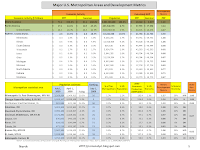I was recently thinking through the relationships of business, industry, and profitability compared to the general outline used in my blog themes. So, I attempted to categorize a sample of businesses using the Basic Summary of the Business Process to obtain a "rough" measure of corresponding operating profitability. Many arguments can be made for some of the companies in the reflected categories relative to their business and industry contributions. Generalizations on functional identity had to be made and their respective traditional structure definition difficulty "game changing" contributions show in the comparative operating margins. The innovative, integrated nature of many of these companies means that operations encompass more than one of the basic categories and industries.
What becomes very apparent is the impact on profitable return compared to control/ownership of resources: Natural Resources, Intellectual Content, Distribution and Allocation Methods. Although not completely reflected in this summary analysis due to multiple factors including timing is the housing "bubble" impact on industry. Lumber, homebuilders, and realtor businesses are operating at best, break-even. The financial industry which distributed the funds financing the "bubble" seems to have absorbed the industry risk and continue to remain profitable due to their infrastructure role in the US economy [Just a thought!]. Operating margin data used is the latest available reported annual earnings where available (FY2010).















